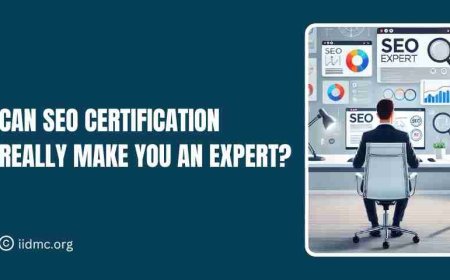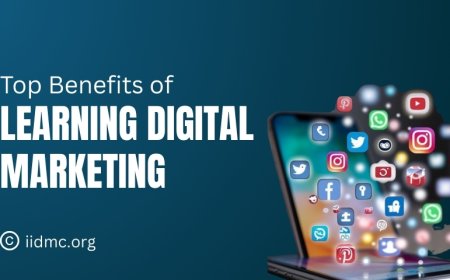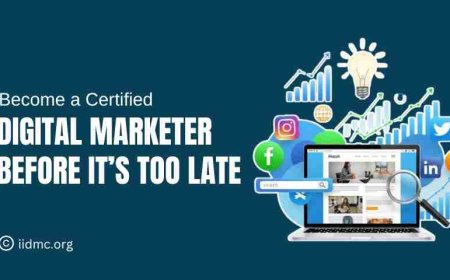Top Fundamentals of Digital Marketing Explained
Discover the essential elements of digital marketing with our guide on the "Top Fundamentals of Digital Marketing Explained." Learn about key strategies in SEO, content marketing, social media, PPC, email marketing, and more to boost your online presence and drive success. Perfect for marketers and business owners alike

Understanding the fundamentals of digital marketing is essential for any business looking to develop online. From small startups to global enterprises, companies are realizing the power of digital channels to connect with customers, promote products, and drive sales. But where should you start? The key lies in mastering the basics. In this blog, we will explain the top fundamentals of digital marketing, from content creation to SEO, that are crucial for building a strong online presence and achieving long-term success. Let’s dive into the core elements that every digital marketer should know!
Digital marketing
Digital marketing refers to the promotion of products, services, or brands using digital channels such as the internet, social media, email, search engines, and mobile applications. It includes a wide range of marketing strategies aimed at connecting with target audiences online.
In today’s business world, digital marketing is essential due to the increasing dependence on digital platforms for consumer engagement. Businesses use digital marketing to reach larger, more diverse audiences, personalize customer experiences, and measure campaign success in real-time, driving better results.
Key digital marketing channels include:
-
SEO (Search Engine Optimization): Optimizing content to rank higher on search engines.
-
Social Media: Promoting content and engaging with customers on platforms like Facebook, Instagram, and LinkedIn.
-
Email Marketing: Sending targeted messages to subscribers to build relationships and drive conversions.
-
PPC (Pay-Per-Click): Paid advertising on search engines and social media to generate traffic.
-
Content Marketing: Creating valuable content to attract and engage an audience.
Digital marketing is vital for modern businesses to thrive in a competitive and digitally-driven world.
Search Engine Optimization (SEO)
Explanation of SEO and Its Importance:
Search Engine Optimization (SEO) involves optimizing a website to improve its ranking on search engines like Google. SEO is crucial because higher rankings lead to increased visibility, which drives organic (non-paid) traffic to a website. This helps businesses attract potential customers and build credibility.
On-Page and Off-Page SEO Basics:
-
On-Page SEO: Refers to optimizing individual web pages, including content, meta tags, headlines, images, and internal links, to make them more search-engine-friendly.
-
Off-Page SEO: Involves activities outside of the website, such as building backlinks, social media engagement, and influencer partnerships, to increase the site’s authority and search ranking.
How SEO Improves Website Visibility and Organic Traffic:
By Improving both on-page and off-page elements, SEO increases a website’s chances of appearing at the top of search results. This higher visibility leads to more organic traffic, improved user engagement, and a better overall digital presence, which translates into increased leads and sales for businesses.
Role of Content in Digital Marketing:
Content is the backbone of digital marketing, used to attract, engage, and convert potential customers. Through valuable and relevant content, businesses can build trust, establish authority in their industry, and nurture relationships with their audience, ultimately driving conversions.
Types of Content and Their Benefits:
-
Blogs: Provide in-depth information, improve SEO, and position businesses as thought leaders.
-
Videos: Highly engaging and shareable, videos communicate complex messages quickly and effectively.
-
Infographics: Visually appealing, they simplify data and make information easy to digest, increasing user engagement and sharing.
Importance of Content Strategy and Consistency:
A well-planned content strategy ensures that businesses deliver the right message to the right audience at the right time. Consistency is key to maintaining audience engagement, building brand recognition, and fostering loyalty. Regular content updates also improve SEO and keep the audience coming back for more
Overview of Popular Social Media Platforms:
-
Facebook: Ideal for broad audience reach, community building, and targeted advertising.
-
Instagram: Focused on visual content; great for brands with strong visual appeal and influencer marketing.
-
LinkedIn: Best for professional networking, B2B marketing, and thought leadership.
How to Build Brand Awareness and Engagement Through Social Media:
Social media platforms help businesses connect with audiences, increase brand visibility, and foster engagement. Consistent posting, interactive content like polls and stories, and engaging with followers through comments and messages build relationships and brand loyalty. Utilizing paid ads and influencer collaborations also amplifies reach.
Tips for Creating Effective Social Media Content:
-
Tailor content to the platform: Ensure content aligns with the platform’s format (e.g., photos for Instagram, articles for LinkedIn).
-
Be authentic and relatable: Humanize your brand by sharing behind-the-scenes content or user-generated content.
-
Use visuals effectively: Eye-catching images, videos, and graphics perform well across all platforms.
-
Encourage interaction: Use calls to action (CTAs), ask questions, and engage directly with followers to spark conversation and boost engagement.
Pay-Per-Click (PPC) Advertising
Introduction to PPC and Paid Search Marketing:
Pay-Per-Click (PPC) is a digital advertising model where advertisers pay a fee each time their ad is clicked. It is a form of paid search marketing that allows businesses to place ads on platforms like Google, Facebook, and Instagram, targeting specific keywords, demographics, or interests.
How PPC Works (Google Ads, Social Media Ads):
In Google Ads, businesses bid on keywords relevant to their products or services. When users search for those keywords, the ads appear at the top of the search results. Similarly, social media ads on platforms like Facebook and Instagram allow advertisers to target audiences based on factors such as age, interests, location, and online behavior.
Benefits of Using PPC for Targeted Reach and Conversions:
PPC offers immediate visibility and targeted reach, making it an effective way to drive traffic and conversions. Businesses can control their budget, track performance, and optimize campaigns in real time to improve ROI. Additionally, PPC ads target specific audiences, increasing the likelihood of reaching potential customers who are ready to convert.
Email Marketing
Importance of Email Marketing in Maintaining Customer Relationships:
Email marketing is a vital tool for nurturing customer relationships, keeping your audience engaged, and driving conversions. Through personalized, targeted emails, businesses can maintain consistent communication with their subscribers, offering value and building loyalty over time.
Overview of Building an Email List and Crafting Effective Campaigns:
Building an email list involves attracting subscribers through signup forms, lead magnets, or offers like discounts and exclusive content. Crafting effective campaigns requires segmenting your audience, personalizing content, and creating clear, compelling calls to action (CTAs) to drive engagement and conversions.
Tips for Improving Open Rates and Engagement:
-
Compelling Subject Lines: Keep them short, clear, and intriguing to boost open rates.
-
Personalization: Use the recipient’s name and tailor content based on their preferences.
-
Timing: Send emails when your audience is most likely to engage (e.g., weekday mornings).
-
Mobile Optimization: Ensure emails are responsive and easy to read on mobile devices.
-
Clear CTAs: Include concise and action-driven CTAs to encourage clicks and conversions.
These strategies help increase the effectiveness of email marketing campaigns and foster lasting customer relationships.
Analytics and Data-Driven Marketing
Explanation of Using Data to Measure Performance and Refine Strategies:
Data-driven marketing involves using analytics to track and measure the performance of marketing campaigns. By analyzing data, businesses can understand customer behavior, identify trends, and make informed decisions to refine their strategies for better results.
Overview of Key Metrics and Tools:
-
Google Analytics: Provides comprehensive insights into website traffic, user behavior, and conversion rates, helping businesses understand what works and what needs improvement.
-
Social Media Insights: Platforms like Facebook, Instagram, and LinkedIn offer analytics on engagement, reach, and audience demographics, allowing for optimization of social media strategies.
Importance of Tracking ROI and Adjusting Campaigns Accordingly:
Tracking Return on Investment (ROI) helps businesses evaluate the effectiveness of their marketing efforts and ensure that resources are being used efficiently. By regularly reviewing performance data and ROI, businesses can adjust campaigns to enhance performance, allocate budgets more effectively, and achieve better overall outcomes.
Analytics and Data-Driven Marketing
Using Data to Measure Performance:
Data-driven marketing uses analytics to track and measure campaign performance, allowing businesses to refine strategies based on insights and improve results.
Key Metrics and Tools:
-
Google Analytics: Measures website traffic, user behavior, and conversions.
-
Social Media Insights: Provides data on engagement, reach, and audience demographics.
Tracking ROI and Adjusting Campaigns:
Monitoring ROI helps evaluate campaign effectiveness and adjust strategies to ensure optimal performance and efficient use of resources.
Challenges in Implementing Digital Marketing Fundamentals
Common Obstacles:
-
Limited Budget: Small budgets can restrict the scope and effectiveness of digital marketing efforts.
-
Lack of Expertise: In-house teams may lack the skills or knowledge needed for effective digital marketing.
-
Data Overload: Managing and interpreting large volumes of data can be overwhelming.
-
Integration Issues: Difficulty in integrating digital marketing strategies with existing systems and processes.
Tips for Overcoming These Challenges:
-
Start Small and Scale: Begin with cost-effective strategies and gradually expand as you see results.
-
Invest in Training: Provide training for your team or hire experts to fill knowledge gaps.
-
Use Data Tools: Implement analytics tools to streamline data management and gain actionable insights.
-
Plan for Integration: Develop a clear digital marketing strategy that aligns with your overall business goals and integrates smoothly with your current systems.
Addressing these challenges with practical solutions can help you implement digital marketing fundamentals successfully and drive better business outcomes.
We’ve covered the essentials of digital marketing, including SEO, content marketing, social media, PPC, and email marketing. Mastering these fundamentals is key to improving your online presence.
Remember, continuous learning and adaptation are crucial in digital marketing. Consider IIDMC (International Institute of Digital Marketing and Certification) for advanced training to further enhance your skills. Start applying these strategies now to see better results and stay ahead in the digital world.





























